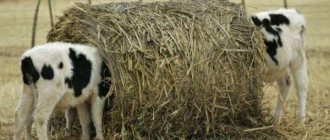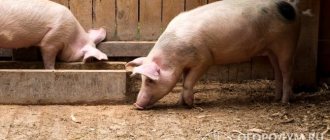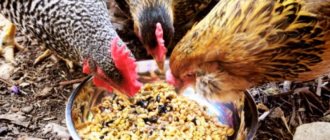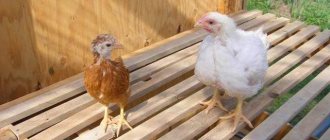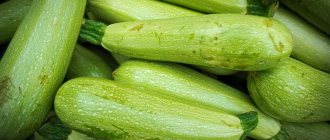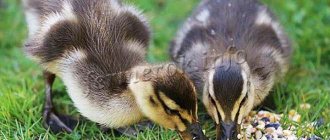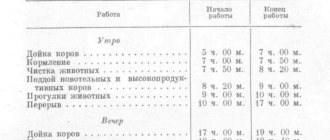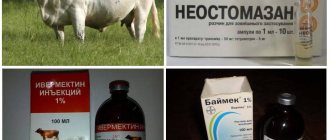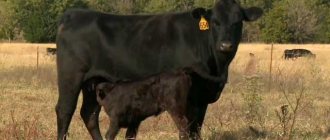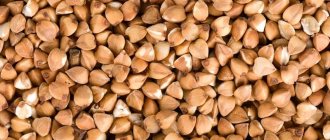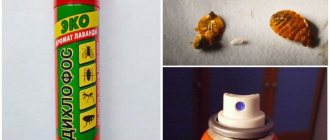In the first days of life, the calf is vulnerable to any disease, since its blood contains a small amount of immune bodies capable of destroying viruses and bacteria. Therefore, it is the quality of care and feeding of calves up to 3 months that determines how quickly and healthy they will grow. They are kept only in clean, dry and ventilated cages, but without constant drafts. Feed for calves should contain a large amount of proteins, vitamins and minerals.
Food for newborn calves should have high energy value and be easily digestible.
Colostrum
After the calf is born, it must be fed colostrum for half an hour or an hour. Thanks to this, the likelihood of diseases will decrease by 70%, since the first milk after birth contains a high concentration of proteins, carbohydrates, fats, minerals and vitamins, as well as immune globulins and antibodies. Unlike regular milk, colostrum contains 2 times more dry matter, so it has a high energy value.
When feeding calves with colostrum, due to the large amount of magnesium salts and high acidity in it, the intestines are cleansed of meconium (original feces).
If you do not feed the calf within an hour after birth, it will begin to suck on surrounding objects. Because of this, he may become ill with dangerous diseases, which in turn will lead to the death of the animal.
The first portion is calculated so that it constitutes from 4 to 6% of the total weight of the calf. But no more than 20% per day, and 24% on subsequent days. You should not give too much colostrum as it will cause intestinal upset. If the calf is weak, then it is better to feed it in small portions (0.5-0.7 l), but more often - up to 6 times a day. The average daily feeding rate is 8 liters.
The temperature of colostrum should be around +37°C. Cold milk will cause intestinal upset.
Until the age of three weeks, calves are recommended to be fed from teat drinkers.
You can also feed using the sucker method. It has the following advantages:
What to feed calves in the first month of life?
For the first 10 days from the moment the calf is born, it must be fed colostrum. Colostrum is a precursor to milk; it appears in a cow immediately after giving birth. As a rule, it is more than enough to feed calves from the first day of life, but if it is not enough, you will have to buy more or take it from another cow.
Stages of calf rumen development
Together with colostrum, the calf receives the necessary microelements and vitamins, which activate its immune system, forcing the body to adapt to the environment and begin to fight harmful microorganisms and viruses.
Regardless of the time of birth, the first portion of colostrum is given to the newborn 30 minutes after birth. The norm is 1.5-2.5 liters depending on the weight of the calf. For the first 4 days, calves are fed 6 times a day. From the 10th day, the calf should get used to the 3-rach diet.
A calf should eat 6-8 kg of food per day, that is, approximately 1.5-2 liters of colostrum or milk at a time. For about two weeks he is fed colostrum, and then mother’s milk, but then he is transferred to collected milk and whole milk substitutes (“Kormilak”). It is important that the whole milk substitute does not contain plant proteins!
In addition to milk and colostrum in the first month, closer to 4 weeks you can supplement the calf with boiled potatoes and even begin to introduce crushed, liquid cereals (oatmeal, semolina). From now on, you can feed the calf with hay with legume leaves. But in small quantities! On average, the norm in the first month for a calf is 1 kg per day.
In the first month of life, it is important that the calf has full access to water, but only from the 3rd day of life. Lack of moisture in the body can lead to weakness, digestive problems and so on. Give boiled water for up to 2 weeks, and then plain water. Instead of water, you can use infusions, but there should still be a drinking bowl with clean water in the stall.
Stages of feeding of newborn calves
Feeding young animals is conventionally divided into three stages:
- Colostrum – from the moment of birth until 10-15 days.
- Dairy - from 2 weeks to 4-6 months.
- Post-milk – from 4-5 months to the age of 16-18 months.
Colostrum period
The weight of the calf at birth is 30-40 kg. The calf's first food is colostrum. The mother cow provides them with a newborn in the first days of life. The composition of this product is very different from ordinary cow's milk. Features and benefits of colostrum:
- the amount of highly digestible protein is 6-7 times greater than in milk;
- supplies the body of calves with protective antibodies that “build” the animal’s immunity and prevent infections;
- 2-3 times fattier than milk;
- several times more vitamins and beneficial minerals, such as magnesium, which prevents intestinal problems.
Colostrum, which a cow gives within 5-7 days after the birth of a calf, is almost identical in composition to milk.
In the first days, the calf eats about 1.5-2 liters of colostrum per feeding. Weakened individuals receive 0.75-1 liters. It is advisable that the calf is fed colostrum from its mother. You should not overeat - digestive upset may occur. The daily intake of a calf fed with colostrum is about 8 liters. If a cow does not have enough colostrum, farmers often prepare a supplement. In a clean container you need to mix:
- cow's milk – 1 l;
- chicken eggs – 4 pieces;
- table salt – 3-4 g.
- fish oil – 15 g.
The calf is given 1 liter of this mixture at intervals of 3-5 hours.
Milk period
After completion of colostrum feeding, the milk period begins. The calf receives milk or whole milk replacer (WMM). In order for an animal to develop properly, it is necessary:
- choose the right replacement parts;
- observe feeding norms and intervals;
- provide free access to hay and water.
CCM, used in the initial period of feeding, provides the calf with the entire complex of nutrients. There are three groups of milk replacers:
- Top quality . They are based on skim milk (at least 50% of the volume of the substitute).
- Medium quality . Based on whey powder.
- Low quality . Based on whey powder and vegetable proteins.
When preparing a milk drink, it is important to maintain the proportions specified by the manufacturer of the substitute.
The use of zero substitutes leads to low weight gain and can even cause diarrhea in calves, since their digestive system is not yet adapted to digest non-dairy proteins.
The nutritional requirements for substitutes are given in Table 1.
Table 1
| Nutritional content, % in 1 kg of milk replacer | Microelements and vitamins per 1 kg | ||
| Crude protein | from 20 | Copper | 4-5 mg |
| Crude fat | 15-20 | Iron | from 30 mg |
| Lysine | from 1.45 | Vitamin A | from 12000 IU |
| Crude fiber | until 3 | Vitamin D | from 15000 IU |
| Calcium | from 0.9 | Vitamin E | from 20 mg |
| Phosphorus | from 0.65 | ||
| Raw ash | from 10 | ||
During the milking period, the calf continues to get accustomed to different types of food. The animal's diet should contain:
- Hay.
- Dairy food.
- Feeding from concentrates.
Only fresh food is used for feeding, and leftover food must be removed from the feeder - stale food can lead to digestive problems. Hay and vegetables are the basis of the diet, but they still cannot completely replace milk. In addition to them, you can prepare milk supplements. For the recipe, see Table 2.
table 2
| The product's name | Weight, g |
| Milk | 1000 |
| Meat and bone meal | 10 |
| Salt | 10 |
| Chalk | 10 |
The above composition compensates for the lack of vitamins, phosphorus and calcium. It is also recommended to give the calf skim milk - 4-6 liters per day. The diet and feeding standards for a calf from two weeks of age to 6 months are shown in Table 3.
Table 3
| Calf age | Average weight, kg | Daily norm, kg | |||
| Whole milk | Concentrated feed | Juicy food | Meadow hay | ||
| 3 week | 40-45 | 6 | — | — | — |
| 4 week | 50-55 | 6 | — | — | — |
| 1 decade | 7 | — | — | — | |
| 2 | 7 | — | — | — | |
| 3 | 6 | 0,1 | — | 0,1 | |
| Total 1st month | 59 | 200 | 1 | — | 1 |
| 4 | 4 | 0,2 | 0,1 | 0,1 | |
| 5 | 1 | 0,5 | 0,3 | 0,2 | |
| 6 | — | 0,8 | 0,5 | 0,2 | |
| Total 2nd month | 81 | 50 | 15 | 9 | 5 |
| 7 | — | 0,6 | 0,5 | 0,5 | |
| 8 | — | 0,6 | 0,5 | 0,5 | |
| 9 | — | 0,6 | 1 | 0,5 | |
| Total 3rd month | 103 | — | 18 | 20 | 15 |
| 10 | — | 0,6 | 1 | 0,8 | |
| 11 | — | 0,6 | 2 | 0,8 | |
| 12 | — | 0,6 | 2 | 1 | |
| Total 4th month | 126 | — | 18 | 50 | 26 |
| 13 | — | 1,3 | 3 | 1 | |
| 14 | — | 1,3 | 3 | 1 | |
| 15 | — | 1,3 | 3 | 1 | |
| Total 5th month | 148 | — | 39 | 90 | 30 |
| 16 | — | 1,5 | 3 | 1,5 | |
| 17 | — | 1,5 | 4 | 1,5 | |
| 18 | — | 2 | 4 | 2 | |
| Total 6th month | 170 | — | 50 | 110 | 50 |
As can be seen from Table 3, from 2 months the proportion of concentrated feed in the animal’s diet is increased. The calf can be given:
- wheat;
- oats;
- barley;
- cake;
- bran.
Before serving, it is advisable to soak the hay in salt water - this will minimize the likelihood of parasites developing in the animal’s intestines.
Weight gain increases if feed is given, and feed is also continued. You can use carrots or beets as succulent food. In addition to milk, calves can be given oatmeal jelly in the first month of life. The order of its preparation:
- Take 80 g of oatmeal and 1 liter of water.
- Pour boiling water over the flakes and cover the pan with a lid. Infuse the mixture for 15 minutes.
Feeding rates for oatmeal jelly are presented in Table 4.
Table 4
| Age of calves, days | Average daily norm, g |
| 10-16 | 200 |
| 16-19 | 400 |
| 19-21 | 600 |
| 21-25 | 700 |
| 25-30 | 900 |
| 30-32 | 1200 |
| 32-36 | 1800 |
| 36-60 | 2400 |
When animals reach two months, oatmeal jelly is replaced with concentrated feed.
An expert explains how to prepare a complete milk replacer for calves:
Post-milk period
In the post-milk period - from the 6th to the 16-18th month, the diet for calves is selected in accordance with their physiological needs, and taking into account the intended purpose of the livestock. If a calf is fattened for meat, its daily diet consists of:
- chopped vegetables and root vegetables – 8 kg;
- hay – 3 kg;
- feed - 5 kg;
- fresh grass - plenty.
Above are nutritional standards for a six-month-old calf. These nutritional standards increase gradually. Table 5 shows diets for heifers.
Table 5
| Feed, kg | Age, months | Heifers 6-9 months old | |||||
| 6-9 | 10-12 | 13-15 | 16-18 | 19-21 | 22-24 | ||
| Average daily increase, g | |||||||
| 550-600 | 450-500 | ||||||
| hay | 2,5 | 2,5 | 2,5 | 2,5 | 3 | 3 | 3,5 |
| silage | 6 | 6,5 | 10 | 12 | 12 | 12 | 12 |
| haylage | 3 | 4 | 4 | 4 | 5 | 6 | 7 |
| straw | — | 1 | 1 | 1 | 1 | 1 | 1 |
| concentrates | 1,1 | 1,1 | 1 | 1 | 1 | 1,1 | 1,5 |
Table 6 shows the diet of bull calves fattened for meat using different types of feeding:
- haylage;
- silage and haylage;
- combined.
Table 6
| Stern | Live weight, kg | ||||||||||||||||
| 380 | 450 | 500 | |||||||||||||||
| Age, months | |||||||||||||||||
| 6-12 | 12-16 | 6-12 | 12-16 | 6-12 | 12-16 | ||||||||||||
| Average daily increase, g | |||||||||||||||||
| 750 | 750 | 900 | 900 | 950 | 1000 | ||||||||||||
| Hay feeding type | |||||||||||||||||
| Hay, kg | 1,5 | 2 | 1,5 | 2 | 1,5 | 2 | |||||||||||
| Haylage, kg | 8 | 10 | 11 | 13 | 11 | 15 | |||||||||||
| Concentrates, kg | 2 | 2 | 2 | 2,5 | 2,5 | 3 | |||||||||||
| Feed phosphate, g | 40 | 50 | 50 | 50 | 50 | 60 | |||||||||||
| Table salt, g | 30 | 40 | 40 | 40 | 40 | 50 | |||||||||||
| Silage-haylage type of feeding | |||||||||||||||||
| Hay, kg | 2 | 2 | 2,5 | 3 | 2,5 | 3 | |||||||||||
| Silage, kg | 10 | 12 | 12 | 13 | 14 | 15 | |||||||||||
| Haylage kg | 4 | 5 | 6 | 6 | 6 | 7 | |||||||||||
| Concentrates, kg | 2 | 2 | 2 | 2,5 | 2,5 | 3 | |||||||||||
| Feed phosphate, g | 40 | 50 | 50 | 50 | 50 | 60 | |||||||||||
| Table salt, g | 30 | 40 | 40 | 40 | 40 | 50 | |||||||||||
| Combined feeding type | |||||||||||||||||
| Hay, kg | 2 | 3 | 2 | 3 | 2,5 | 4 | |||||||||||
| Haylage, kg | 5 | 5 | 5 | 5 | 5 | 5 | |||||||||||
| Silage, kg | 8 | 10 | 9 | 10 | 10 | 11 | |||||||||||
| Root vegetables, kg | 5 | 6 | 5 | 6 | 5 | 6 | |||||||||||
| Concentrates, kg | 2 | 2 | 2 | 2,5 | 2,5 | 3 | |||||||||||
| Feed phosphate, g | 40 | 50 | 50 | 50 | 50 | 60 | |||||||||||
| Table salt, g | 30 | 40 | 40 | 40 | 40 | 50 | |||||||||||
Adding feed
At 2 months, concentrate mixtures, which include cereals, bran and cake, should be added to the calves’ diet. Veterinarians believe that the second month of life is the ideal period for introducing feed. You should start with 50 g per day and gradually increase.
Animals should continue to be given fresh skim milk, but it is not recommended to use it at the same time as milk. It is best to feed calves these foods at different times of the day.
It is important to feed two-month-old calves with fresh hay and sifted oatmeal. If babies were born in the summer, then you can add fresh grass. How to feed her is described below. In addition, it is recommended to offer young animals small-stemmed hay, which has previously been soaked in a saline solution. Salt helps prevent the development of parasites in the intestines of animals.
From the age of two months, young animals require fresh vegetables. But they need to be introduced gradually to identify possible intolerance to certain foods. Babies also need about 1 hay per day.
Diet after a month
The diet of a one-month-old calf should include succulent feed. Dry hay should be mixed with chopped beets, carrots, potato peels, and apple peelings. At the same time, you need to feed the calf only fresh foods. If dirt, sour milk or low-quality feed gets into the bowl, stomach problems will begin.
Cattle (cattle) grow faster if their daily diet includes vitamins A, E, D, phosphorus and calcium. Compound feed does not provide the body with these microelements. Therefore, it is important to understand what to feed one-month-old calves, in addition to the main menu. It is necessary to use special feed, which can be prepared for calves at home. To 1 liter of milk you need to add 10 g of the following ingredients:
- salt;
- chalk;
- meat and bone meal.
After one month of life, feeding the young animals must be supplemented with the opposite. Its daily intake should be at least 4 liters. To produce this liquid, a special device is used - a separator. With its help you will be able to separate the cream. The cloudy liquid formed after the process is the return. About 6 liters of this swill are required per day.
What and how to feed in the second and third months?
A month after birth, the animal is considered strong, its immune system is fully functioning. Therefore, feeding calves with whole milk can be almost completely stopped. The rate of milk per day for the 2nd month ranges from 3-4 liters per day. This will be quite enough. Some breeders do not give the calf milk at all for 2 months, but if finances allow, this will not harm.
Now the basis of the diet is reverse. They begin to give it in small portions with a gradual increase in quantity. At least 4-6 liters are fed per day. Plant food is also introduced along with the skim milk. To make it easy for the calf to get used to new food, you need to purchase easily digestible feed with a large amount of nutrients. They are not cheap, but they are ideal for calves at 2 months of age!
If it is not possible to buy feed, you can prepare it yourself; for this, take high-quality leafy hay and oatmeal (sifted). Separately, hay with small stems, soaked in a salt solution, is poured into the feeders. 800 grams of such food are given per day for 2-3 months.
If 2-3 months fall in the summer, you can give the young individual fresh grass. Give up to 2 kg of greens per day. Vegetables are introduced at 2 months, but they need to be given gradually; some animals may have intolerance to certain foods. The amount of hay at this age is up to 1.5 kg per day.
Vitamin supplements
Most of the vitamins should be supplied to the calf through food. But it is not always possible to meet all needs with food. If a certain vitamin is not enough, the animal will weaken and get sick. This is especially true during the winter season. It is recommended to supplement the calf diet with vitamin complexes, for example:
- "Trivitamin." Add 4-5 drops to the food. Dosage depending on age is indicated in the instructions.
- "Eleovit".
- "Biovit-80".
These additives are recommended to be added to the feed from the third week of life. There are also drugs administered intramuscularly - for example, “Nucleopeptide” or “Gavryusha”. Before using the complexes, you should consult a veterinarian.
Folk recipe for replenishing vitamins:
- Spruce or pine needles are placed in a deep pan - 1 kg.
- Fill the needles with hot water - 5 liters. Boil for half an hour.
- When the composition has cooled, the needles are removed and the juice is squeezed into a saucepan through cheesecloth.
It turns out to be a vitamin drink, which is given to calves from two weeks of age. Give it warm, adding a little salt. The calf is given 50 g of infusion per day. Gradually increasing the norm, at 2 months they reach 1 liter.
What to feed calves up to 6 months?
Everything you need for feeding and comfortable keeping of calves
During the 4th month, feeding young calves is no different from feeding a 3-month-old animal. Only concentrates, succulent feed and hay need to be given approximately 1.5 times more.
At month 5, the amount of skim milk is reduced to 3 liters per day. During this month, the calf should consume 1.6 kg of concentrates, 5 kg of fresh greens and 2.3 kg of hay per day.
At 6 months, active fattening of the animal begins. The main part of the diet is feed. The better quality it is, the fewer vitamins you will need to buy. During the day, the animal must eat at least 1.6 kg of concentrates, 6.6 kg of fresh grass, 3.3 kg of hay. They no longer give refunds at all.
At this time, you can give the young animals the vegetables and fruits they love (apples, carrots, beets, potatoes) in full, just like adults.
Menu after six months
We figured out feeding calves up to 6 months of age. Now we need to figure out how to select a diet after this period.
The nutrition of calves during the post-milk period should also be of very high quality. This is especially important for bulls that are being fattened for further slaughter for meat. In addition to the basic diet, the animal needs to be given supplements containing manganese, iodine and other trace elements. About 5 kg of feed and 8-9 kg of fresh finely chopped vegetables are required per day. There is no need to limit the amount of grass and hay. There should be plenty of it unless the veterinarian prescribes a special diet. The older the calf, the more feed it should receive. By 10 months, about 12 kg of root vegetables and at least 3 kg of hay per day are required.
6 months after birth, young cows can be given boiled potatoes and chopped fresh carrots placed on top of the hay. It is very important that animals have a sufficient amount of fresh, clean water before and after six months of life. Especially if they eat a lot of hay.
Feeding young animals after 6 months
At the end of the post-milk period, the diet for animals is selected especially carefully. In this case, it is based not only on the physiological needs of the body, but also on the intended purpose of the livestock.
So, in the case of meat fattening, a six-month-old bull needs for a day:
- 8 kg of chopped root vegetables and vegetables;
- 5 kg of feed;
- 3 kg of hay;
- plenty of fresh grass from the pasture.
Important! These standards are gradually increased every month. Thus, the volume of vegetables fed by 10 months should already be 12 kg.
Free access to clean water is also still extremely important.
If the specified feeding rules are observed, starting from the 6th month, calves should gain 700-900 g. This is the main sign of the effectiveness of the chosen fattening program. Also, the correct choice of diet is indicated by the presence of appetite in young animals and high activity.
If no growth is observed for a long time, and the animal becomes lethargic and eats worse, it is assigned to a separate group of calves. There they are examined by a veterinarian, and if there are no diseases, the young animals are transferred to a special enhanced diet.
Be sure to take into account the age-related need for minerals and vitamins. Feed must be selected in such a way that for 1 energy feed unit there is:
- 8 g calcium;
- 6-7 g table salt;
- 5 g phosphorus;
- 30 mg carotene;
- 50 mg vitamin E.
More precisely, the diet is planned based on the physiological characteristics of a particular animal. Feeding efficiency is determined by the weight of a one-year-old calf. Normally, it should be at least 50% of the weight of adult cattle.
Advantages of specialized feeds
Ready-made feed contains nutrients in the form most convenient for absorption. In the process of feeding, calves receive the maximum of useful elements from the same amount of food, and their diet becomes balanced.
Dry mixtures are easy to transport and designed for long-term storage. They do not lose their nutritional value. Combined feeds are easy to dose. Residues are easily removed, making it easier to maintain hygiene in the barn.
The use of ready-made mixtures makes it possible to reduce product consumption. Animals are satisfied with less food and eat it almost completely. As a result, the amount of waste is reduced.
The calf diet includes 3 components: basic, balancing feed and productive feed.
The main one is roughage food, which is given to animals twice a day. This type includes:
- hay;
- husk;
- straw;
- chaff;
- husk.
They contain a large amount of fiber; such foods promote increased salivation and reduce acidity in the stomach. Feed the main food before concentrated food. In the total daily diet, the amount of main food should be at least 50%.
Balancing - necessary to equalize the lack or excess of protein in the coarse basic diet. It is required to compensate for the lack of nutrients. Feed includes compound feeds that help improve protein balance. If there is an excess of it, calves should receive oats, triticale, and barley.
If there is a lack of protein, animals are fed:
- soybean meal;
- rapeseed cake;
- silage grains.
Productive - given to beef calves at the fattening stage. It ensures rapid growth of muscle mass and the formation of a strong skeleton. Dairy animals receive productive adult food during the milking period.
Hay
Closer to one week of age, calves begin to be accustomed to eating hay, as it promotes the development of the digestive system, as well as strengthening the chewing muscles. The hay provided is only clean, fresh, but slightly withered, with small stems and leaves. These will be the first to be torn off and eaten by the calf.
The hay is either hung in the cage at a level just above the calf's back, about 10 cm, or simply placed in the feeder. The suspended feeding method is preferable, since in this case the calf will be distracted from sucking on surrounding objects. The portion is gradually increased; to feed calves up to 3 months, up to 1.5 kg of hay is needed.
How to get used to mixed feed?
Compound feed for cattle has a different composition and is intended for animals of different ages. Starter formulas can be fed up to 3 months of age. In addition to nutrients, the mixtures contain probiotics, which prevent disorders of the still imperfect digestion of calves.
You need to get used to mixed feed gradually, giving it in small portions. Animals usually like the taste of combined feeds and eat them willingly. Since the feed is dry, the calves need to be given plenty of water; water should be constantly poured into the drinking bowls.
Concentrates, succulent feeds and vitamin supplements
Concentrated feed is given to calves that have reached two weeks of age. Most often, regular sifted oatmeal is used, as it is easily digestible.
Or they buy starter feed, since, compared to oatmeal, it contains all the vitamins, minerals and other useful elements necessary for the healthy growth of the animal. You can make the combined mixture with your own hands.
The basis will be oats, wheat, corn and barley. Also adds sunflower meal, fish meal, feed yeast, grass meal, salt, chalk, phosphates and vitamins.
Salt and chalk are given to calves that have reached three weeks of age. In the first month of life, you can also feed whole grains of oats or barley. Thanks to this, the stomach and chewing muscles develop faster.
Don't forget about succulent food. They can be given to calves from three weeks of age.
Add boiled potatoes (mashed potatoes) and grated carrots to the milk, and at 4 weeks old you can start giving fodder beets.
The greatest number of diseases occurs due to a lack of vitamins, so it is always necessary to give vitamin preparations to calves.
The main thing is that before adding them to the food, carefully study the instructions and follow the indicated dosages. Starting from 1 month, you can feed animals with Felucen for calves.
This energy supplement comes in granule form and contains amino acids, minerals, a complex of vitamins, as well as fats and carbohydrates.
Replacement milk and powdered milk
Dry nutritional mixtures are fed to calves that have reached ten days of age. 1 kg of whole milk substitute can replace 9.5 kg of regular milk.
Milk replacer is diluted for calves according to the manufacturer's instructions, but most often 8.5 liters of water will be required for 1 kg of powder. It consists of a mixture of skim milk, grain, whey and buttermilk, and also contains an antibiotic for intestinal disorders.
When feeding milk replacer, the possibility of disease transmission to the calf from the mother is eliminated. In addition, substitutes contain more vitamins than whole milk.
Milk replacer also includes milk powder for calves. It is made from whole milk using the drying method. There are two types: low-fat and whole. The main differences between them are the different amounts of nutrients and their purpose. Both types have a long shelf life.
Before diluting milk powder for calves, you need to calculate the portion. It should be 4.5% of the total weight of the animal. Another positive quality of powdered milk is that its composition never changes from that of regular milk (depending on the season of the year). It also does not transmit infectious diseases.
In addition, feeding calves with milk replacer is much more profitable than with whole milk.
Composition of feed for calves
The types and amounts of ingredients in specific products vary depending on the group of animals they are intended for. However, the basis of all feed mixtures for cattle are components of plant origin:
| Juicy feed | These include pasture grasses, silage, haylage, root and tuber crops, pumpkin and melon crops. Such feeds consist of 65–92% water. Their dry matter is dominated by sugars and starch, and contains relatively little protein, fat and fiber. Juicy feed is easily digested, the digestibility of organic substances can reach up to 90%. Animals eat them with great appetite. |
| Rough | This group includes hay, straw, grass meal, and chaff. Roughage consists of more than 20% fiber. They form the basis of the diet of herbivores during the stall period, when grazing is impossible. The nutritional value of roughage is higher than that of succulent feed. However, they are not enough to provide a balanced diet. |
| Concentrated | Feed with high nutritional value. They are obtained from cereals and legumes, as well as from the processing of grains and oilseeds. Concentrated feeds are rich in proteins, carbohydrates, vitamins and minerals. Most often, animals are given barley, oats, corn, soybeans, peas, lentils, bran, sunflower cake, beet, soybean, and rapeseed meal. |
| Watery | They include stillage (a processed product of alcohol production), as well as beet pulp and potato pulp, and contain a lot of carbohydrates, including fiber. |
Animal products meet the body's needs for essential amino acids and vitamins. They are received by:
- from whole milk;
- buttermilk;
- serums;
- meat,
- meat and bone,
- blood,
- fish meal,
- yeast.
Sources of mineral components are:
- salt;
- feed chalk;
- tricalcium phosphate.
Mixtures for feeding calves must contain a certain amount:
- proteins and amino acids, including essential ones;
- vitamins, mainly A, E, D3;
- micro- and macroelements (zinc, copper, iron, selenium, iodine, manganese, cobalt, phosphorus, calcium, sodium);
- organic acids;
- pre- and probiotics;
- antioxidants.
Probiotics included in starter compositions replace pathogenic microflora, promote efficient digestion of food and its better absorption. The percentage of components and energy value depend on the type of product.
Proteins are building materials for cells and play a key role in metabolic processes. They include proteins and amides (easily digestible intermediate products). With proteins, the body receives 10 essential amino acids, which it cannot synthesize on its own or produces in insufficient quantities. Animals especially need:
- in lysine;
- methionine;
- tryptophan;
- threonine.
A lack of essential amino acids in the diet leads to a slowdown in metabolism, hormonal disorders, decreased immunity and reproductive function.
Carbohydrates are the main components in the nutrition of farm animals, affecting the synthesis of DNA and RNA and participating in the formation of immunity. They enter the body in the form of:
- starch;
- sugars;
- fiber.
Carbohydrates are responsible for the accumulation of nutrients in cells and the formation of ATP. The energy level and the functioning of the digestive system depend on their quantity. For animals, especially ruminants, fiber is of great importance, as it maintains normal stomach acidity and stimulates intestinal motility.
Fats are a source of energy and nutrient reserves. They are necessary for animals for normal cellular metabolism. Unsaturated fats have a positive effect on the functioning of the cardiovascular system, while saturated fats have a positive effect on gaining muscle mass and fat, as well as their taste.
Minerals are found in small quantities in all cells. If they are deficient, metabolic processes are inhibited and the general condition of the animals worsens. The group of macroelements includes:
- calcium - bone tissue material;
- phosphorus is an element of lipid and carbohydrate metabolism;
- sodium regulates osmotic pressure;
- chlorine stimulates digestion;
- potassium is necessary for stable heart function and animal growth;
- magnesium is a component of lung tissue;
- sulfur is needed for normal growth of hair, hooves, and horns.
Microelements are components of enzymes and hormones and in their composition have a significant impact on metabolic processes. The most important of them include iron, copper, cobalt, iodine, and selenium.
Vitamins, like minerals, are required in small quantities, but are involved in all metabolic processes. Although they are organic compounds, most of them cannot be synthesized by animals and must be obtained through food. When calculating the dosage, it is important to take into account the properties of vitamins. Fat-soluble substances (A, D, E, K) tend to accumulate in the liver and adipose tissue. As a result, the likelihood of hypervitaminosis increases. Water-soluble (group B, C) are quickly excreted in the urine, so animals are more likely to be deficient in them.
Enzymes in the feed are necessary for better digestibility of the product. They break down complex compounds into simpler ones, speeding up their digestion. Enzymes also affect coat color.
When to introduce to water and other foods
After 3 days from the moment of birth, the calf begins to be given water. For feeding calves up to 3 months and older, you need to use only clean and fresh water from +20°C to +25°C, and for newborns up to two weeks, boiled water, with a temperature from +35°C to +37°C. It significantly improves the digestibility of feed and the speed of digestion. Instead of water, you can use various infusions, for example, pine, hay or other medicinal herbs. They improve appetite, and this in turn accelerates the growth of the animal.
In the first 2 weeks of life, calves are fed 1 liter using a nipple drinker, one and a half or 2 hours after eating. Older animals are given 1 to 2 liters in a bucket. Mother's milk is given to calves until they are two weeks old. Then, over the next two weeks, it is better to feed with collected milk from all cows, while occasionally giving out other feed, for example, skimmed milk or milk replacer for calves.
The transition to another type of feeding must be smooth, otherwise the animal will develop intestinal upset.
Newborn calves can be fed curdled milk. To do this, take about 38-40 liters of skim milk per 1 liter of starter. Before feeding, it is kept for at least half a day. To fatten calves for meat at home, milk feeds are provided generously, as they contribute to better formation and growth of muscle mass.
Feeding methods
Either of two feeding methods can be used to feed newborn calves:
- Drinker This method is typically used by ranchers during the first 3 weeks of a calf's life. To implement the method, special drinking bowls with nipples filled with colostrum are required. Food for babies is heated to 37°C.
- Sucker. This option involves direct feeding from the udder. Advantages of the suction method:
- calves grow healthy;
- the food is already “ready”, it does not need to be heated, poured into a drinking bowl, or other manipulations performed;
- food is produced in small portions - food is better absorbed;
- young animals grow 30% more intensively.
When suckling feeding, the cow's udder must be washed so that no infection can enter the calf's body.
Important nuances
Feeding young animals with semolina porridge allows you to satiate them faster. For 3 liters of milk you need 4 tablespoons of cereal. In addition to porridge and milk feeding, after 1 month of life, calves need to be given high-quality hay and feed. They help normalize digestion and have a positive effect on the development of internal organs. Newborn calves should be provided with plenty of water. The body requires it already on the 6th day of life. A liter of boiled water is given 2 hours after feeding with milk.
Drinking will quench thirst, improve digestion and increase the body's ability to absorb the nutrients contained in calf feed. If the animal does not receive enough water during feeding, growth will be slow and activity will be lower. Therefore, already at three weeks, the calf should have an unlimited amount of clean, fresh water at room temperature.
Farmers sometimes wonder whether it is possible to give goat milk to their animals. It can only be used in diluted form due to its high fat content.
Nutrition of newborn babies
A newborn calf needs to be fed correctly, since from the first days of life it must receive the required amount of vitamins. On day 1, he must be allowed to drink plenty of colostrum from his mother’s udder.
The colostrum feeding period lasts for a week. You cannot skip it, otherwise the calf may grow up very weak.
If you don't have enough colostrum, you can prepare it yourself. To do this, a liter of milk is mixed with 15 g of fish oil and 4 eggs, after which a pinch of salt is added. The daily feeding norm is 300 ml.
A two-week-old calf needs to be fed three times a day. If newborn calves are fed with artificial formula, a bucket or nipple is used for feeding. But in this case, you will have to teach your baby to drink on his own.
Dairy feeding is carried out for up to 3 months, and at the same time the animals should gradually begin to be fed with semolina porridge and hay.
If you lack minerals
When feeding the young does not provide its body with the necessary amount of minerals, it begins to chew the bedding and lick the walls. In this case, you need to put a special muzzle on the baby and introduce feeding into the diet. In this case, you should adhere to a certain feeding scheme for calves:
- on days 5-6, milk should be mixed with honey and oatmeal; 10-12 g of chalk and salt will also not hurt;
- on the 7th day of a calf’s life, add 3 tablespoons of semolina per 3 liters of milk;
- on the 10th day, in the morning and evening, you need to give the bull about 100 g of mashed potatoes cooked in milk for fattening;
- from 2 weeks of life you can give 150 g of carrots per day and by 2 months you can increase the daily intake to a kilogram;
- by 3 weeks it is necessary to introduce boiled apples, finely chopped beets, potato peelings - the products must be mixed with hay;
- from 2 months, 250 g of raw potatoes per day will provide the required amount of minerals.
You can also use special vitamin and mineral supplements. But you need to know how to use them correctly, and first consult with a veterinarian so as not to harm the animal.
Diet of a 3 month old calf
The period of life that begins when the calf reaches 3 months of age is called post-milk. Just by the name of this period, you can guess that at this stage milk is practically excluded from the diet. Accordingly, it must be replaced by some other type of food. This food is a concentrate made from bran, cake and cereals. You can prepare such food at home, or you can purchase ready-made ones.
When purchasing feed, you should carefully study its composition. They give preference to feed enriched with mineral additives and vitamins. Preparing feed at home is cheaper. But, in addition to feed, you will have to additionally provide mineral supplements in the form of meat and bone meal, chalk and salt. At the same time, you should not overuse mineral supplements: their excess will not benefit either the newborn calf or the adults.
If this growth period falls in the summer months, then green feed will be an excellent alternative to compound feed. At the beginning of the post-milk period, no more than 2 kg of green feed are given per day. At this stage, the milk is not removed yet, but only its quantity is reduced. Gradually increase the dose of green food and, accordingly, reduce the milk supply. So, at the age of 4 months, a calf should receive an average of 11 kg of green feed per day. At the end of the post-milk period, the calf is given 18-20 kg of green feed per day.
For some heifers, hunting begins already in the 6th month of life, so during this period the heifers need to be grazed separately from the bulls, if there are any in the herd.
What else you need to know about feeding
In addition to basic information about nutrition, you need to understand that feeding calves at home is not limited to milk and dry food alone; such a diet is considered quite meager. It is important to ensure that the animal receives all the necessary vitamins. It is especially important to do this when there was a deficiency of colostrum or there was none at all. In such cases, vitamin preparations should be given intramuscularly, preferably in winter. It is recommended to give injections of vitamins A, D and E. The volume of injection is determined by the veterinarian and will depend on the age and weight of the individual animal.
Also special mention needs to be made about water. You should give liquid to the animal starting from a week of age and monitor how much the cow drinks. Water should always be freely available so that the animal drinks as much as it needs. Only then can the diet be considered complete.
In conclusion, we say that the owner must devote maximum time to the newborn calf from the first days of life until the two- or three-month-old calf gains independence: provide normal living and maintenance conditions, care, feed and water the calf. Since this determines what his health status will be in the future.
Calf care
Caring for calves is not limited to feeding alone. You need to monitor the livestock from the first minute of the livestock’s life.
Birth of a calf
During calving, the cow needs to be close to the woman in labor. She is not always able to give birth on her own. If the calf is not born within 40 minutes, you need to help it. It is advisable that this assistance be provided by a specialist who will carefully pull the calf out by the front legs and head. It is extremely difficult to perform this procedure independently without causing harm to either the mother in labor or the newborn calf. If there is no veterinarian nearby and you have to help the cow give birth, then you should pull the calf at those moments when the cow is pushing.
After birth, the calf's umbilical cord is cut. In this case, you need to use pre-disinfected scissors. The edge of the umbilical cord should be filled with iodine, after squeezing out any remaining blood from it. The calf is then placed next to the cow so that she can lick it. The rough tongue of the mother in labor massages the skin of the newborn, increasing blood circulation. This helps the calf stay warm. If the cow refuses to lick the calf after birth, the mucus from its body must be removed using burlap.
Upon completion of all the above-described activities, the newborn calf is placed in a pre-prepared cage. Preliminary preparation of the cell means its disinfection. The floor of the room should be covered with a thick layer of clean and fresh straw. The barn should be at least 12°C. It is better that the temperature is 15-16°C. A special feature of newborn calves is that they need very little time after birth to acclimatize. After just 6 hours, they stand on their feet perfectly.
Caring for calves in the first months of life
To avoid problems with newborn calves, they need to be accustomed to a routine from the first weeks. Food is given at the same time, otherwise the animals will not eat well. Sometimes the lack of a regime leads to overeating, which negatively affects the health of the livestock.
During the first two weeks, young animals should be kept in separate cages. The temperature in the barn should not fall below 13-15°C. All liquid feeds are given warm (35-36°C). Only after reaching the age of one month are the calves transferred to a common barn, where they are kept in cages in groups. At the same time, young animals at this age are not mixed with adult bulls and cows. Bulls and heifers up to 6 months can be kept together.
A two-month-old calf is less whimsical than a one-month-old calf. At this age, it can already be grazed with adult cows, but the composition of the feed and food additives differs from the composition of the feed of adults, so nutrition must be carefully monitored. An incorrectly selected diet will negatively affect the milk and meat productivity of cattle in the future.
When raising calves, the most important thing is to keep the cages clean. It is necessary to systematically disinfest the barn and ventilate the room.
